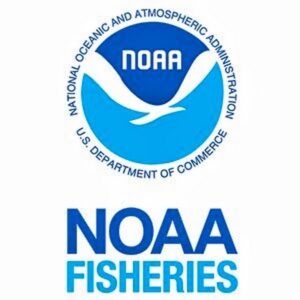
New models developed by NOAA Fisheries scientists are predicting red king crab bycatch occurrence and abundance in Bristol Bay flatfish trawl fisheries.
The models have found a general northward shift in occurrence and abundance of different ages of male and female red king crab in Bristol Bay, NOAA Fisheries said Sept. 5.
These models, which demonstrate it is possible to predict where and when bycatch occurs, are an important first step toward building predictive tools for fishing fleets and fisheries managers to reduce bycatch, said Emily Ryznar, lead author and fisheries biologist at the Alaska Fisheries Science Center, or AFSC.
The study contributes timely insight regarding distribution and drivers of Bristol Bay red king crab bycatch,” Kodiak Laboratory Director and AFSC shellfish assessment program manager Mike Litzow said.
AFSC researchers have been assessing the abundance of Bristol Bay red king crab annually since 1975, via a standardized fisheries-independent summer bottom trawl survey. Data gathered over nearly 50 years has provided much information on summer red king crab distribution, but distribution of these crab in other seasons is lacking, they said.
Surveying fish and crab stocks on a year-round basis is often difficult due to the cost and weather conditions outside of summer months. This is where fisheries dependent data from onboard observers, industry-reported logbooks or fish landings can help, they said.
It may, in fact, provide the best available information for understanding the biology of species caught in directed fisheries or as bycatch. This data can also identify the location and timing of bycatch hotspots, they said.
Researchers used this data to build new models about distribution of red king crab bycatch in groundfish fisheries in the fall, winter and spring seasons. Their stated goal is to provide managers and harvesters with information so they can evaluate the efficacy of statis closure areas to limit bycatch and protect red king crab.
Researchers found that summer survey data and fishery-dependent data from the trawl fisheries were generally better predictors of bycatch distribution than environmental variables such as sea ice coverage, which drives bottom temperature.
Depth was also an important variable for predicting bycatch occurrence for mature and immature females. It potentially indicated the depth fidelity of females compared to seasonally migrating males.
When this information was correlated with the model they found that Bristol Bay crab are more likely to occur above or near the northern boundary of the Red King Crab Savings Area, which is closed to flatfish trawling year round.
This places them in Bycatch Limitation Zone 1, south of 58°N and east of 165°W, which is closed to flatfish trawling when bycatch limits are reached.
The model may also prove useful in understanding seasonal movement of Bristol Bay red king crab, researchers said. Such movements are thought to cover hundreds of kilometers and future distribution shifts with warming ocean temperatures, but are poorly documented.
